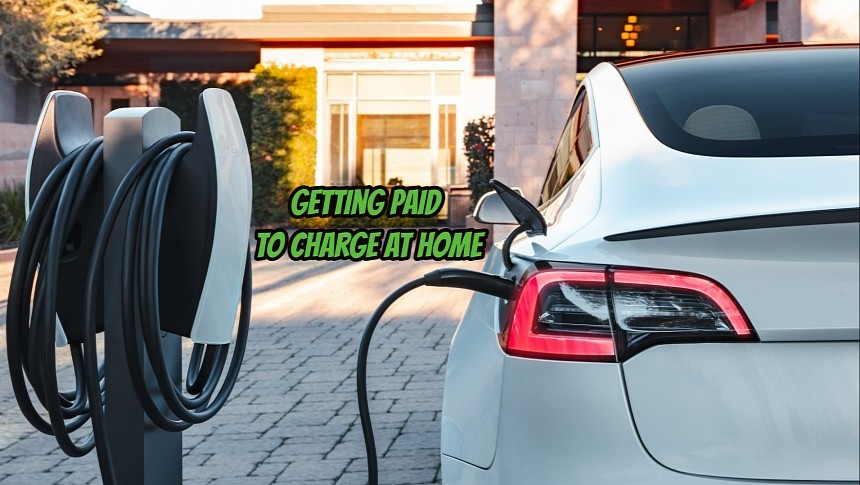Free fuel sounds like a dream for nearly anyone, even though it would likely have an unbeknownst economic impact. Receiving money to fill up the tank is downright unbelievable. But for some Europeans, this is real. It's what's happening right now. Here's how such an incredible thing is possible.
There's no denying that not paying for fuel sounds like a great deal, especially when the world is going through an inflationary period. Most goods and services prices would surely have to go down as fast as possible. But in Europe, EV owners are getting an even better deal – they receive money to charge their cars.
A Danish Tesla Model 3 owner, for example, can receive a little over $17 for extracting electrons from the grid after keeping the vehicle plugged in for around 6 hours. Depending on the dynamic hourly price and other grid incentives, the sum given to EV owners who charge at home may vary. Thus, getting $17 for filling up a 66-kWh battery over a six-hour period is not guaranteed. For some, it can be less. For others, more.
As one Model 3 owner showed on Twitter, they extracted 11 kWh from the grid from 11 AM until 5 PM. They received the most significant net payout for replenishing the car's energy storage unit between 2 PM and 3 PM.
This can happen in some European countries because electricity is hard to store economically. When supply exceeds demand, the price of electricity can go negative because it's negotiated hourly on the spot market. Thus, electricity producers end up paying buyers (e.g., retail energy providers) to offload their production that cannot be stored for later use.
Renewable energy sources are mostly to blame for these types of grid discrepancies. Solar and wind, for example, can have a higher output than what market participants decided upon. When the supply overcomes demand, a solution to consume electricity must be found. Typically, big industrious players can help by buying cheap energy or increasing their consumption. But in some European countries, retail customers have dynamic contracts. As such, they can get paid for consuming energy during specific intervals.
Customers can either receive money in their bank account or use these amounts as discounts on future monthly bills when the price of electricity can be higher. It's a win-win situation for everyone because it eliminates the "destroying value" effect, which may discourage investors from putting more money into energy production when they see no profit. When more EV owners participate in balancing the electricity supply and demand, everything can even out. Eventually, the temporary monetary losses experienced by electricity producers can also be offset.
Dynamic electricity prices are available in the US as well, but the grid is often not capable of satisfying demand. During summer and winter, blackouts are common. Thus, balancing production and consumption is more complicated in America. More investments are needed if we want to take full advantage of renewables and dynamic energy retail contracts.
A Danish Tesla Model 3 owner, for example, can receive a little over $17 for extracting electrons from the grid after keeping the vehicle plugged in for around 6 hours. Depending on the dynamic hourly price and other grid incentives, the sum given to EV owners who charge at home may vary. Thus, getting $17 for filling up a 66-kWh battery over a six-hour period is not guaranteed. For some, it can be less. For others, more.
As one Model 3 owner showed on Twitter, they extracted 11 kWh from the grid from 11 AM until 5 PM. They received the most significant net payout for replenishing the car's energy storage unit between 2 PM and 3 PM.
This can happen in some European countries because electricity is hard to store economically. When supply exceeds demand, the price of electricity can go negative because it's negotiated hourly on the spot market. Thus, electricity producers end up paying buyers (e.g., retail energy providers) to offload their production that cannot be stored for later use.
Renewable energy sources are mostly to blame for these types of grid discrepancies. Solar and wind, for example, can have a higher output than what market participants decided upon. When the supply overcomes demand, a solution to consume electricity must be found. Typically, big industrious players can help by buying cheap energy or increasing their consumption. But in some European countries, retail customers have dynamic contracts. As such, they can get paid for consuming energy during specific intervals.
Customers can either receive money in their bank account or use these amounts as discounts on future monthly bills when the price of electricity can be higher. It's a win-win situation for everyone because it eliminates the "destroying value" effect, which may discourage investors from putting more money into energy production when they see no profit. When more EV owners participate in balancing the electricity supply and demand, everything can even out. Eventually, the temporary monetary losses experienced by electricity producers can also be offset.
Dynamic electricity prices are available in the US as well, but the grid is often not capable of satisfying demand. During summer and winter, blackouts are common. Thus, balancing production and consumption is more complicated in America. More investments are needed if we want to take full advantage of renewables and dynamic energy retail contracts.
Owning an Electric Vehicle comes with a lot of perks — but my personal favorite is getting paid to "fill up" our Tesla!
— Mathias Føns (@FonsDK) July 2, 2023
On a day like today—where European electricity prices are breaking records—my ???????? family will net ~$17 in 6 hours, simply by charging our Tesla Model 3 at home. pic.twitter.com/2p7IlifL8N




































